Artist: Francisco Letelier and Marybeth Fama
LAX Airport Police Facility
Into the Blue reflects the mission and values of the Los Angeles Airport Police Division, and the history and beauty of the neighboring community of Westchester. Featuring a variety of flora, fauna and figures, and blending imagery from the past and present, the mural welcomes viewers with a vivid array of scenes that highlight the Airport Police Division’s commitment to serving the public, and the historical, cultural and geographic resources that define the region.
The imagery can be categorized into three thematic groups: community, culture and place. Together these elements honor early and contemporary peoples, and echo the locale’s dynamic intersection of water, land and sky.
The neighboring community of Westchester is part of the Ballona Creek ecosystem. The indigenous Kizh-Gabrieleño people, who are depicted in canoes, lived along the Ballona Creek watershed. Their characteristics as travelers and explorers are symbolic of the people who arrive and depart from LAX today. To the right, a vacquero, or Mexican cowboy, represents the Machado family, who in the 1800s established the area’s early boundaries as Rancho La Ballona. Throughout the mural are depictions of figures representing various roles of the Los Angeles Airport Police Division. In addition to the K-9 Unit officer depicted, others portrayed include a patrol officer wearing a dark navy uniform and a traffic officer whose safety vest glows with an overlay of patterns reminiscent of runway lights. Together these officers ensure the safe and secure operations of LAX. A mountain lion poised on a cliff echoes the bronze lion sculptures at the National Law Enforcement Officers Memorial in Washington, D.C., symbolizes the protective role of police officers. Beneath the mountain lion appears the name of LAX Airport Police Officer Tommy Scott, who was killed in the line of duty at the airport in 2005. These elements emphasize deep connections within the law enforcement community.
Historical and contemporary travelers are portrayed, illustrating how the region has long been a gateway for people of different cultures and backgrounds. Maps of the local area are superimposed on some figures, while other figures contain flags of various nations or bear universal symbols for peace, justice and inclusion.The foreground of the mural depicts emotional departures and reunions of passengers, while the image of a young Mayan girl represents the immigrants who continue to shape the identity of Los Angeles.
The mural references the environmentally protected sand dunes located on the west side of LAX with imagery of a Great Blue Heron and pelicans. The birds also create a connection to the history of flight and the early airplanes that flew at Mines Field, which later became what is now LAX. Colorful butterflies span the mural’s composition, calling attention to the endangered El Segundo Blue Butterfly found in the neighboring dunes, as well as the Palos Verdes Blue, another local endangered butterfly species. LAX’s restoration projects are helping to protect the Coast Buckwheat, which provides a habitat for the butterflies. An astronaut alludes to new frontiers yet to be discovered.
This mural is on view at 9160 Loyola Boulevard, Los Angeles, CA 90045.
About the Artists
Chilean-American artist, Francisco Letelier, is known internationally for his public works. His soaring Sun and Moon murals at the Westlake/MacArthur Park Metro Station celebrate the diversity of Los Angeles. The artist weaves history with contemporary experiences while building dialogues between nations, individuals and communities. Marybeth Fama is the daughter of a creative Italian immigrant family. Born in Boston and raised in Chicago, she has lived in Los Angeles for more than 30 years. Known for her commanding skill in human portraiture and landscape, Fama uses insights into history, geography and culture to create thought provoking experiences.
Photos courtesy of SKA Studios LLC. Click image to zoom.
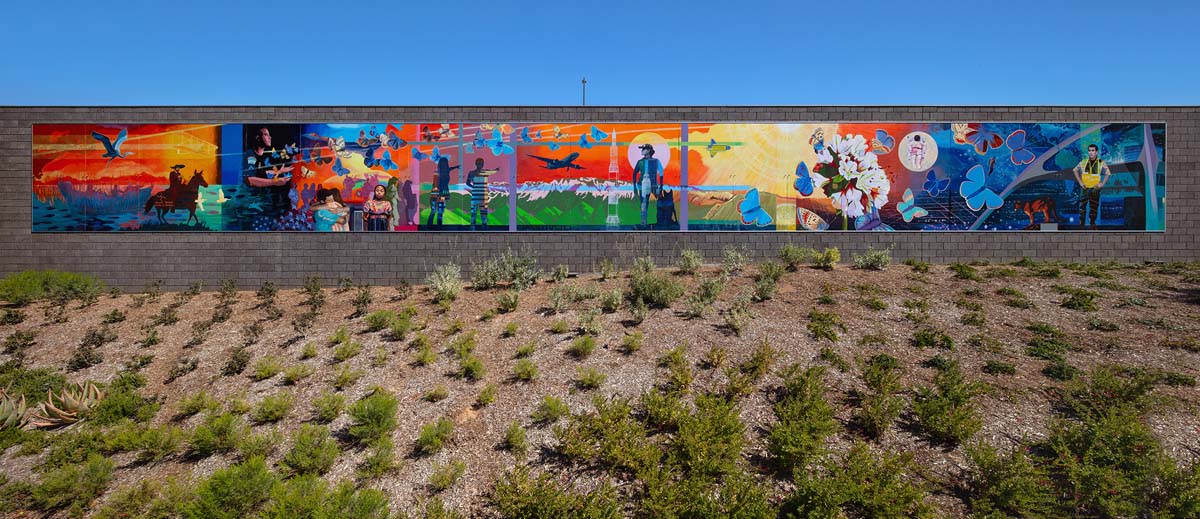
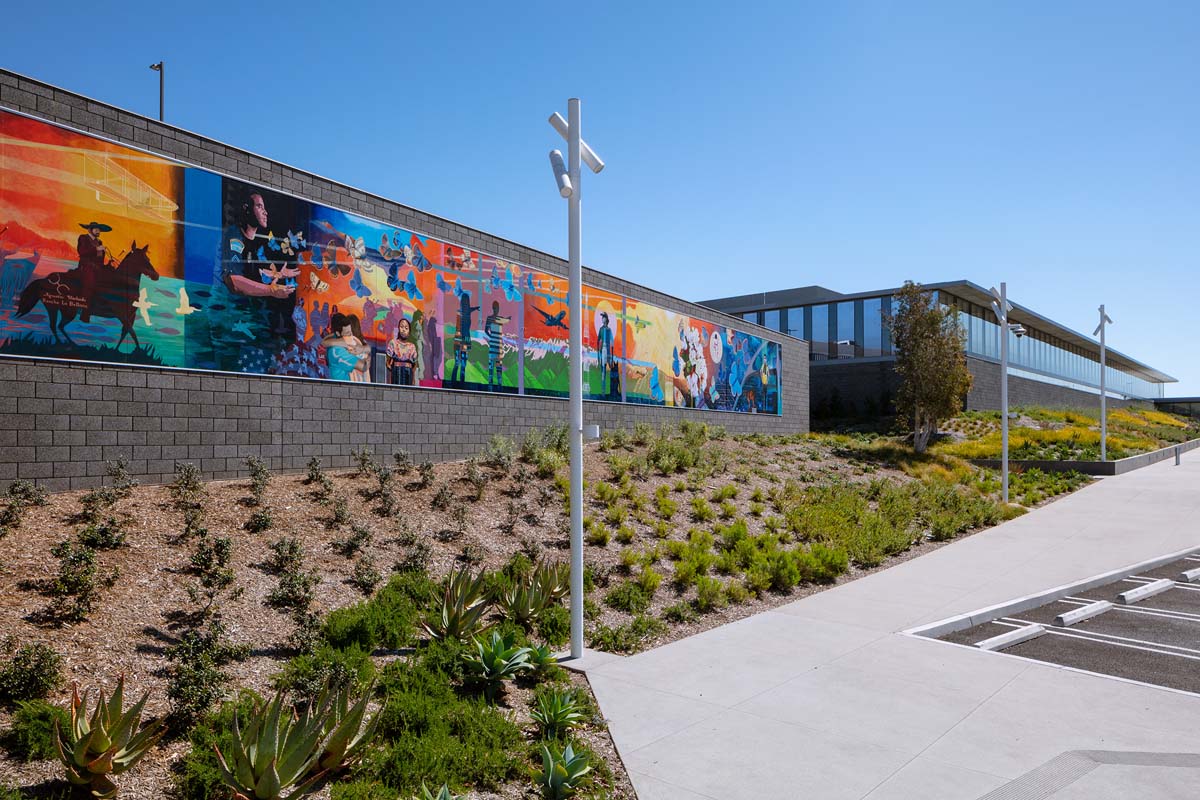
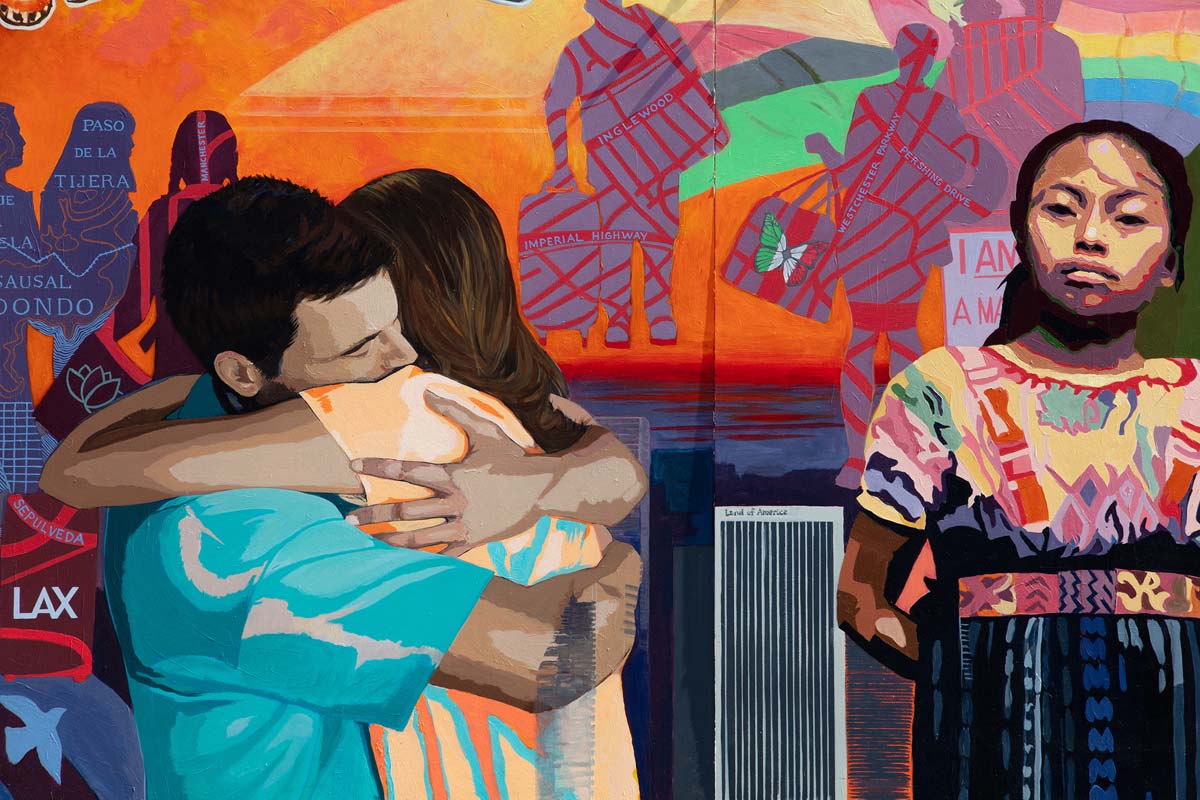

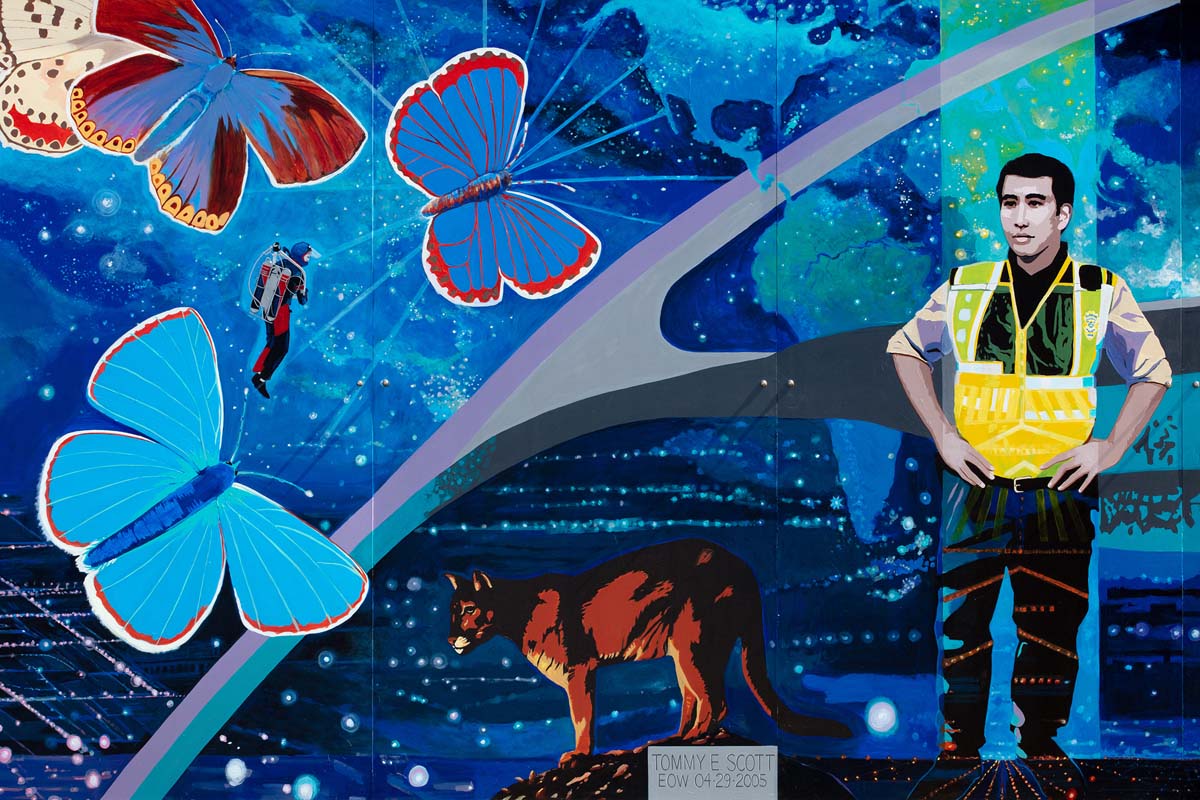

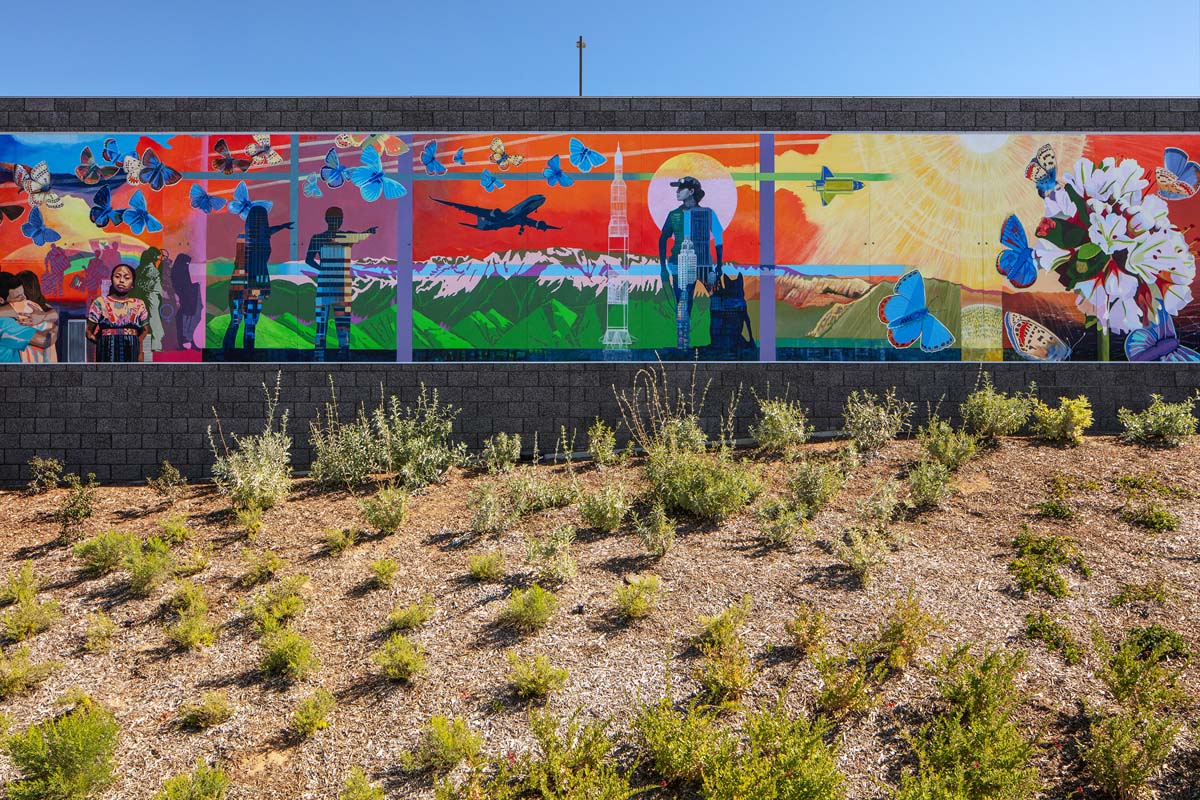
 Francisco Letelier and Marybeth Fama, Into The Blue, 2022, Acrylic on aluminum composite panels, 105 x 10 feet
Francisco Letelier and Marybeth Fama, Into The Blue, 2022, Acrylic on aluminum composite panels, 105 x 10 feet



